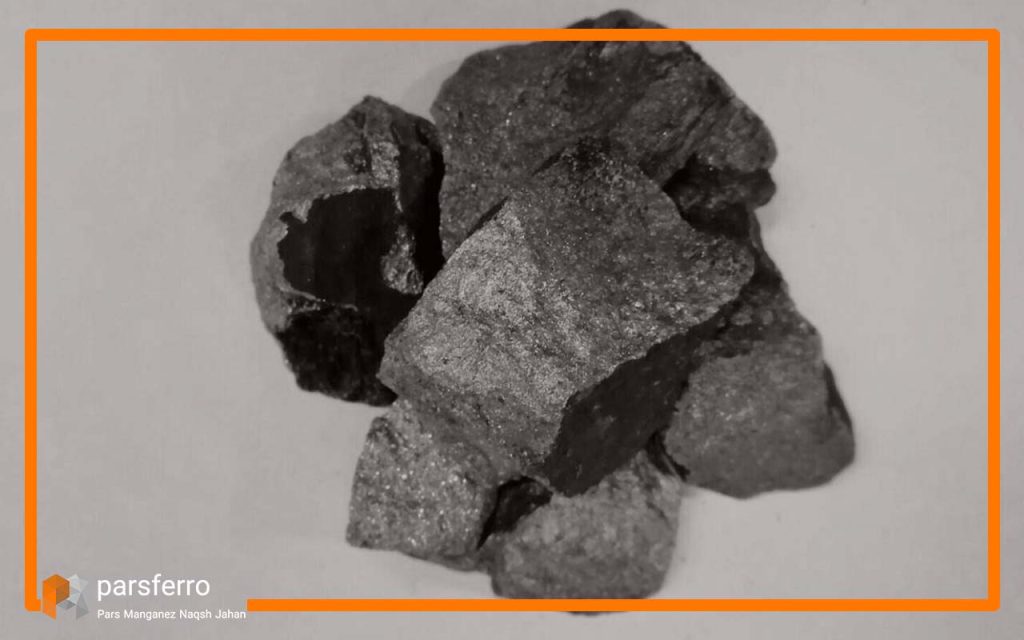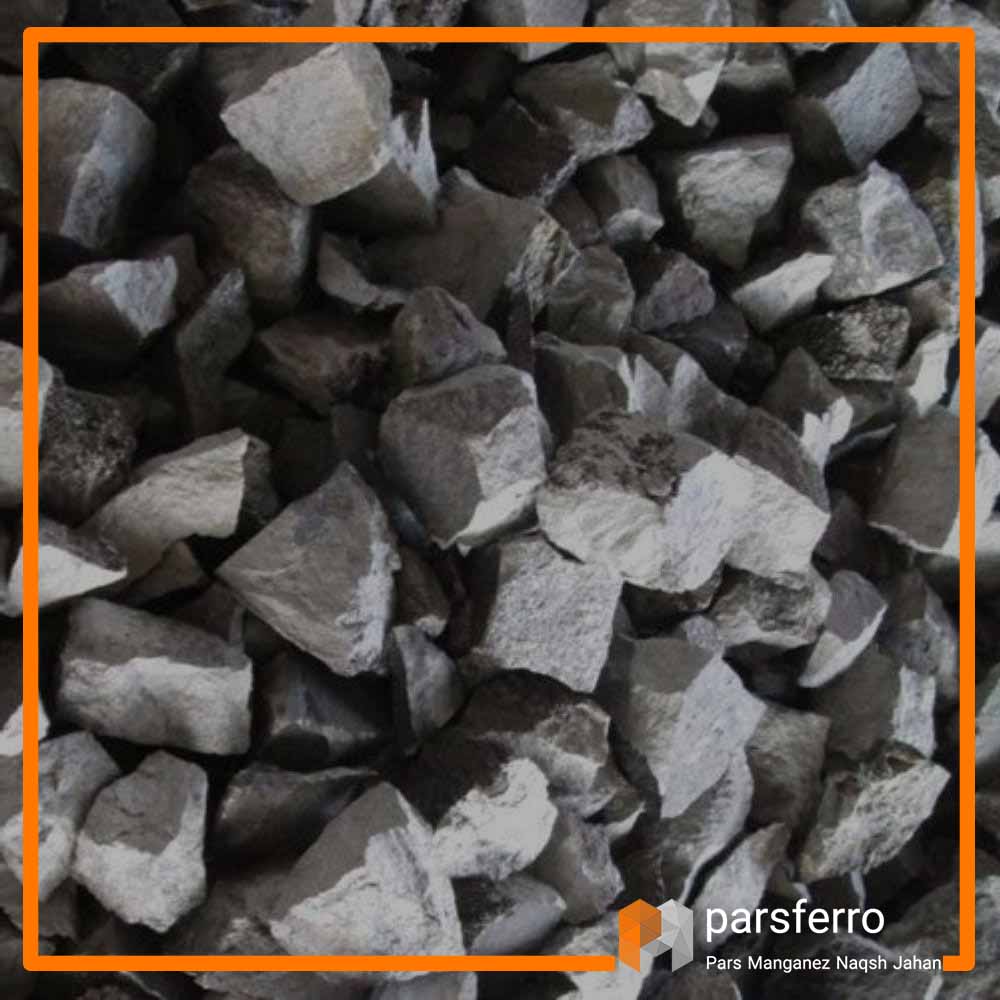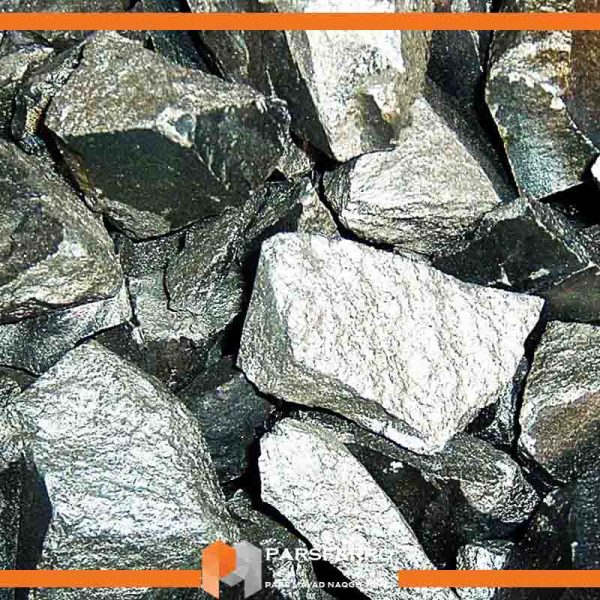ferromanganese price
In recent decades, the prices of industrial metals, especially ferromanganese, have become an important aspect of the global economy. Due to the importance of this metal in the steel production and mining industry, ferromanganese price analysis is very important. Ferromanganese is an alloy composed of iron (Fe) and manganese (Mn) with one or more other elements and it’s used in many industries, including steel production. To inquire about ferromanganese prices, you can contact Pars Manganese Naqsh Jahan via email, our experts will guide you.
ferromanganese is one of the most important industrial metals
Ferromanganese is an alloy composed of iron (Fe) and manganese (Mn), typically with a manganese content ranging from 65% to 75%. This alloy is one of the basic components in steel production and is valuable for its unique properties and contributions to the metal industry. Below are the key properties and characteristics of ferromanganese:
- High manganese percentage: The key feature of ferromanganese is its high manganese content, typically ranging from 65% to 75%. This high manganese percentage imparts the alloy with the capability to undergo purification and manganese injection into steel during the steel production process, a crucial aspect for improving steel quality.
- Oxide reduction agent: ferromanganese acts as a strong oxide reduction agent in steel production. This helps the process of removing oxygen from the molten steel, preventing the formation of unwanted. This refining process is critical to improve the mechanical and chemical properties of the final steel product.
- Sulfur removal agent: In addition to its purification properties, ferromanganese also acts as a sulfur removal agent. This helps to reduce the sulfur content in the steel, which is very important for improving the workability and overall quality of the steel. Reducing sulfur levels improves weldability and corrosion resistance(resistance to iron rust).
- Enhancement of mechanical properties: ferromanganese contributes to improving various mechanical properties of steel. Promoting the process of purification and removal of sulfur, it facilitates the improvement of the steel’s microstructure characteristic, which leads to increased strength, resistance, and ductility.
- Alloying element: The addition of ferromanganese leads to the inclusion of manganese as an alloying element in steel. Manganese, along with other alloying elements, influences steel hardness, wear resistance, and other desirable properties. This alloying process allows manufacturers to optimize steel-specific applications.
- Stability at high temperatures: Ferromanganese remains stable at high temperatures, making it suitable for use in steel production processes involving molten metals. Its stability ensures that this alloy performs effectively under the demanding conditions of steel production.
- An important role of ferromanganese in steel production: ferromanganese is used in various types of steel production processes, including the production of carbon steel and stainless steel. Its capabilities in altering the properties of steel have turned it into an essential part of the metal industry.
read more: What is ferromanganese alloy?
ferromanganese uses
let’s review some of the most important applications of manganese:
- Steel and alloys: In the steel industry, ferromanganese is increased as an alloying element. Adding the appropriate amount of ferromanganese to iron helps the alloy composition of the steel and increases the corrosion resistance.
- Lithium batteries: in lithium batteries, ferromanganese is an effective cathode component, recognized for its energy density and battery life.
- Organic fertilizers and herbicides: Ferromanganese is used as a catalyst in some processes to produce organic fertilizers and herbicides. These processes include the synthesis of organic materials and the production of chemical products used in agriculture.
- Aluminum alloys and metals: In the production of aluminum alloys and metals, ferromanganese is used as an alloying element and improves physical properties such as corrosion resistance and other mechanical properties of metals.
- Pigments and colors: In the production of pigments and colors, ferromanganese is used as a key element to create stable and high-quality colors. These pigments are used in industrial paints, automotive paints, and consumer paints.
- Food products and supplements: In food products and supplements, ferromanganese is used as a nutrient element. This metal plays a crucial role in the activities of enzymes and biochemical processes in the human body and is necessary to maintain the health of the skeleton, skin, and various body systems.
- Metal slag: In the production of metal slags, ferromanganese is used as an additive to optimize the physical and chemical properties of the slag, improving the performance of mineral melting and refining processes.
Currently, the ferromanganese market has attracted significant attention due to its importance in various industrial applications. In the following, we will discuss more about the ferromanganese price.
Factors influencing ferromanganese price
One of the main factors determinants of ferromanganese price is the balance between demand and supply in the market. Demand for ferromanganese is influenced by economic factors such as economic growth and the development of the steel industry, as well as constraints on the extraction of this metal.
Increases or decreases in steel production, which is the primary consumer of manganese, can directly impact demand. Additionally, disruptions in manganese mining or processing operations can affect the overall supply chain. A detailed analysis of the effect of each of these factors on the basic ferromanganese price is necessary.
Production Costs in ferromanganese price
The cost of producing ferromanganese, including extraction, processing, and transportation expenses, plays a significant role in determining its market price. Changes in energy prices, labor costs, and technological advancements in mining and processing can influence production costs.
Global Economic Conditions
ferromanganese prices are linked to broader economic conditions. During periods of economic growth, there is usually an increase in steel consumption, leading to higher demand for manganese. Conversely, economic downturns can result in reduced steel production and decreased demand for manganese.
Geopolitical Events
Geopolitical factors, such as trade tensions, sanctions, or political instability in major manganese-producing or consuming countries, can impact the global ferromanganese market. Changes in trade policies and geopolitical events can disrupt supply chains and contribute to price volatility.
The Impact of the Market on the ferromanganese Price
Fluctuations in ferromanganese prices can have ripple effects throughout the steel industry and related sectors. Companies involved in ferromanganese mining, processing, and steel production can experience changes in revenue and profitability based on market conditions. Additionally, end-users in industries like construction and automotive, which heavily rely on steel, may be influenced by ferromanganese price variations.






Reviews
There are no reviews yet.